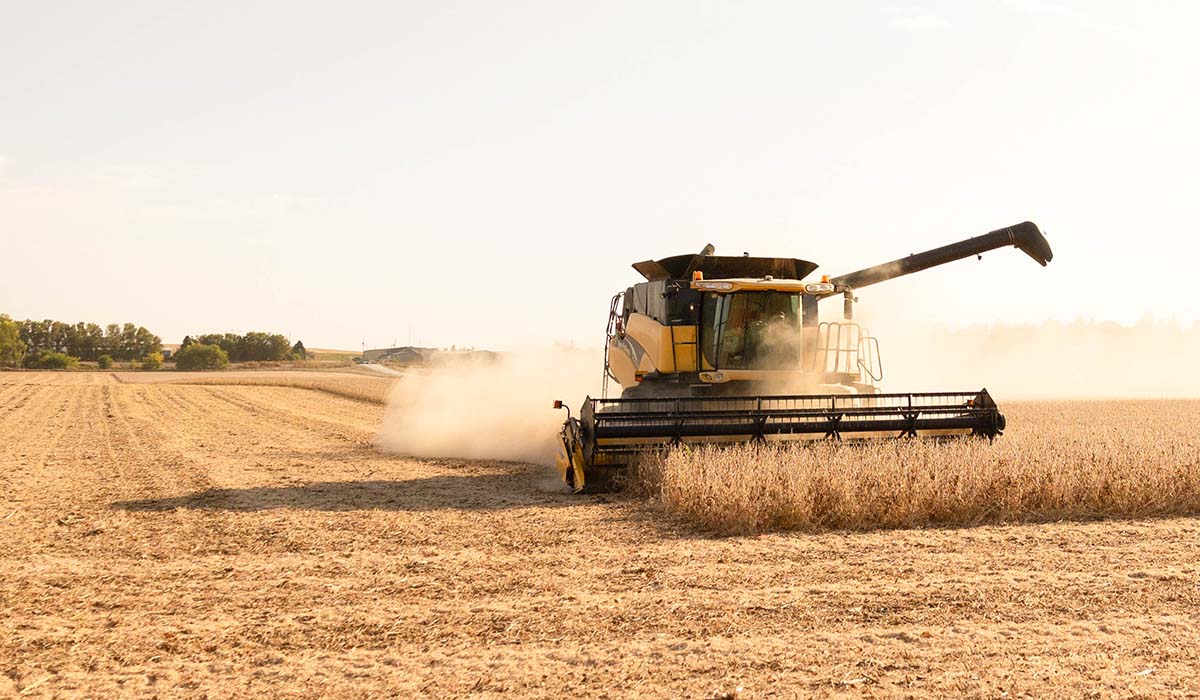
(Photo: Iowa Soybean Association / Joclyn Kuboushek)
Walking Rows: Disease and fertility decisions
September 25, 2025 | Kriss Nelson
After a slow start, harvest is in full swing in many areas across the state as the weather cooperates.
Given the late-season impact of diseases like sudden death syndrome (SDS) in soybeans and southern rust in corn, Iowa Soybean Association’s (ISA) research agronomists are encouraging farmers to consider these diseases and other potential yield-limiting factors this season. Understanding what is happening during harvest can help plan for the 2026 growing season.
Alex Schaffer - Central/South Central Iowa
As this precipitation event moves out of Iowa this week, harvest is ramping up to full capacity in the central and southern parts of the state. We've seen some corn come out ahead of schedule due to the southern rust in parts of the state. Although soybean harvest has been slow to start, many fields are now ready, and with a stretch of favorable cutting weather, I think farmers will shift their attention from early corn to soybeans.
The reports I'm hearing from early corn harvests are that even where fungicide was applied, farmers are still noticing a slight loss in both yield and test weight. An example of this would be a fungicide application at VT growth stage, which was effective for a couple of weeks, then southern rust continued to develop later into the season, affecting grain fill. I have heard even worse reports of yield reductions, up to and exceeding 50% yield loss, where fungicide wasn’t applied for various reasons.

This leads me to consider two pieces of advice. The first thing I want to reiterate is scouting. I've mentioned this before, but thinking about disease pressure in Missouri or Arkansas in a year like this when storms are blowing up inoculum from the south is extremely valuable. This gives the farmer the opportunity to exercise some form of integrated pest management by paying attention to the weather and what could potentially happen on the home farm but isn't so late of a decision-making point that action can't be taken in the critical response time.
The second thing I think about in this scenario is product placement. Some corn hybrids have been bred to stand up to major adversity and others need heavy management to optimize yield. I believe it is good to place both products on your farm strategically. This means use the defensive hybrid in a field that is hard to manage or place the racehorse in a field that gets a lot of attention. Ask your seed sales representative to help you place products appropriately.
The last thing weighing on farmers’ minds is what we should be doing with dry fertilizer this fall. We all know that fertilizer prices are upside down with commodity prices, and that has many farmers rethinking their fertilizer plans. My advice would be not to be too short-sighted on this topic. You can likely go at least a year and possibly many more without applying dry fertilizer and not be at a financial loss to the farm. What I would caution about is mining the soil too much because you will have to replenish that fertility in the future. It’s difficult to predict what fertilizer prices will look like when you eventually see significant yield loss and need the fertilizer to bring your soils back to sufficient levels. If you are making the choice to reduce or eliminate dry fertilizer this fall, I recommend continuing your soil sampling regimen and keeping a close eye on what is happening in the soil so you don't end up too far in the hole down the road.
Shane Beck – Northeast/Northern Iowa
Harvest is underway, and farmers have been slowly progressing across my area over the last couple of weeks. I have heard and seen more corn being taken out of the field than soybeans at this point, but there are some soybeans that have been harvested.
Overall, yields have been good, with some farmers a little disappointed with what they hoped to get. I have heard 200-250 bushels to the acre for corn and 50-70 bushels to the acre for soybeans.

Late-season disease really appears to have cut into the corn yields. While on the soybean side, a lack of rainfall in August may have limited their potential.
We still have several opportunities available for fall trials. We have a wide range of trials ranging from cover crops, phosphorus with strip tilling, nitrogen applications in corn, Pivot Bio, a residue breakdown trial with BW Fusion and a weeds trial with cover crops. If any of these trials interest you, reach out to me.
Craig Woods – Northwest Iowa
Harvest is underway despite intermittent showers in the western portion of the state, where some areas received up to 4 inches of rain and hail. Despite the hiccups and slowdowns, the harvest outlook remains pretty good.
Most soybean crops looked good throughout the season, minus some beans that had been hit by sudden death syndrome (SDS); however, corn got hit hard this year by southern rust, which may cause a serious yield hit depending on your fungicide applications.
As harvest is underway on early planted and early maturity groups, yields have been overall good but volatile within the field for both soybeans and corn. With clear dry weather ahead, I expect that dry down won’t slow in coming weeks. It will be important to keep on top of field conditions to minimize yield losses due to lodging, shatter or insect feeding as we progress through harvest.

For those looking ahead to fall activities besides nutrient sampling, targeted sampling for soybean cyst nematodes (SCN) may be beneficial if you have had SCN in a field that will go to soybeans next year. For any counts above the 10,000 egg threshold, it would be beneficial to move to a non-host crop to reduce the concentration of SCN and mitigate potential losses. It’s expected that each year of non-host crop, such as corn or small grains, the SCN population in the soil should naturally decline, expecting to drop by about 30-50%. Resistant varieties can be used in conditions where fields have pressure, but not to the level of adjustments required.
Lucas De Bruin - Southeast/Eastern Iowa
Some rain over the weekend slowed harvest down, but not for too long, as it was quite dry to start with. Results have been all over the board. I’ve heard some good soybean yields so far. It will be interesting to see what the longer-season soybeans produce.

Corn is a tale of two managements. Fungicides are definitely giving returns this year. Moisture is variable across the fields as well. We need to keep an eye on stalk strength, as fields I have been in have brittle stalks, and I have seen the tops fall out of many fields.
Cover crops have been getting aerially applied. This weekend's moisture will definitely help get everything germinated and growing. We still have room for some fall trials if you or someone you know is interested in participating.
Gathered by Kriss Nelson.
Back